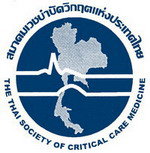Viscoelastography interpretation
Viscoelastography interpretation
DOI:
https://doi.org/10.54205/ccc.v33.273141Keywords:
Viscoelastography, Thromboelastography, Rotational thromboelastometryAbstract
The application of viscoelastography, which includes both Thromboelastography (TEG) and Rotational Thromboelastometry (ROTEM), has become increasingly prominent across various clinical disciplines. Its utility is well-documented in surgical settings, trauma care, postpartum care, and critical care medicine, where patients often experience complex and dynamic disturbances in hemostasis. Viscoelastic testing offers a rapid, real-time, point-of-care evaluation of the entire coagulation process, providing valuable insights into the distinct phases of clot initiation, clot strength, and subsequent fibrinolysis. The understanding and timely interpretation of viscoelastography results enhance the precision of hemostatic management by guiding the judicious use of appropriate blood components and hemostatic agents. This targeted approach reduces the risks associated with transfusion-related complications and contributes to improved overall clinical outcomes.
Downloads
References
Cole E, Weaver A, Gall L, West A, Nevin D, Tallach R, et al. A decade of damage control resuscitation: New transfusion practice, new survivors, new directions. Ann Surg. 2021;273:1215-20.
Rossaint R, Afshari A, Bouillon B, Cerny V, Cimpoesu D, Curry N, et al. The European guideline on management of major bleeding and coagulopathy following trauma: sixth edition. Crit Care. 2023;27:80.
LaGrone LN, Stein D, Cribari C, Kaups K, Harris C, Miller AN, et al. American association for the surgery of Trauma/American college of surgeons committee on trauma: Clinical protocol for damage-control resuscitation for the adult trauma patient. J Trauma Acute Care Surg. 2024;96:510-20.
Drumheller BC, Stein DM, Moore LJ, Rizoli SB, Cohen MJ. Thromboelastography and rotational thromboelastometry for the surgical intensivist: A narrative review. J Trauma Acute Care Surg. 2019;86:710-21.
Saner FH, Abeysundara L, Hartmann M, Mallett SV. Rational approach to transfusion in liver transplantation. Minerva Anestesiol. 2018;84:378-88.
Khanna P, Sinha C, Singh AK, Kumar A, Sarkar S. The role of point of care thromboelastography (TEG) and thromboelastometry (ROTEM) in management of Primary postpartum haemorrhage: A meta-analysis and systematic review. Saudi J Anaesth. 2023;17:23-32.
Wikkelso A, Wetterslev J, Moller AM, Afshari A. Thromboelastography (TEG) or thromboelastometry (ROTEM) to monitor haemostatic treatment versus usual care in adults or children with bleeding. Cochrane Database Syst Rev. 2016;2016:CD007871.
Fahrendorff M, Oliveri RS, Johansson PI. The use of viscoelastic haemostatic assays in goal-directing treatment with allogeneic blood products - A systematic review and meta-analysis. Scand J Trauma Resusc Emerg Med. 2017;25:39.
Bugaev N, Como JJ, Golani G, Freeman JJ, Sawhney JS, Vatsaas CJ, et al. Thromboelastography and rotational thromboelastometry in bleeding patients with coagulopathy: Practice management guideline from the Eastern Association for the Surgery of Trauma. J Trauma Acute Care Surg. 2020;89:999-1017.
Santos AS, Oliveira AJF, Barbosa MCL, Nogueira J. Viscoelastic haemostatic assays in the perioperative period of surgical procedures: Systematic review and meta-analysis. J Clin Anesth. 2020;64:109809.
Scridon A. Platelets and Their Role in Hemostasis and Thrombosis-From Physiology to Pathophysiology and Therapeutic Implications. Int J Mol Sci. 2022;23.
Gale AJ. Continuing education course #2: current understanding of hemostasis. Toxicol Pathol. 2011;39:273-80.
Dahlback B. Blood coagulation. Lancet. 2000;355(9215):1627-32.
Hoffman M, Monroe DM, 3rd. A cell-based model of hemostasis. Thromb Haemost. 2001;85:958-65.
Risman RA, Kirby NC, Bannish BE, Hudson NE, Tutwiler V. Fibrinolysis: an illustrated review. Res Pract Thromb Haemost. 2023;7:100081.
Solomon C, Sorensen B, Hochleitner G, Kashuk J, Ranucci M, Schochl H. Comparison of whole blood fibrin-based clot tests in thrombelastography and thromboelastometry. Anesth Analg. 2012;114:721-30.
Whiting D, DiNardo JA. TEG and ROTEM: technology and clinical applications. Am J Hematol. 2014;89:228-32.
Srivastava A, Kelleher A. Point-of-care coagulation testing. Continuing Education in Anaesthesia Critical Care & Pain. 2012;13:12-6.
Chavez JJ, Foley DE, Snider CC, Howell JC, Cohen E, Muenchen RA, et al. A Novel Thrombelastograph® Tissue Factor/Kaolin Assay of Activated Clotting Times for Monitoring Heparin Anticoagulation During Cardiopulmonary Bypass. Anesthesia & Analgesia. 2004;99:1290-4.
Drotarova M, Zolkova J, Belakova KM, Brunclikova M, Skornova I, Stasko J, et al. Basic Principles of Rotational Thromboelastometry (ROTEM(R)) and the role of ROTEM-Guided fibrinogen replacement therapy in the management of coagulopathies. Diagnostics (Basel). 2023;13.
Harr JN, Moore EE, Chin TL, Chapman MP, Ghasabyan A, Stringham JR, et al. Viscoelastic hemostatic fibrinogen assays detect fibrinolysis early. Eur J Trauma Emerg Surg. 2015;41:49-56.
Wannatoop T, Kittivorapart J, Kittisares K, Werawatakul W, Ruchutrakool T, Permpikul P, et al. Implementation of Viscoelastic Hemostatic Assay-guided Therapy to Evaluate and Manage Trauma-related Bleeding: A Pilot Study from a Level 1 Trauma Center in Bangkok, Thailand. Siriraj Medical Journal. 2022;74:294-304.

Downloads
Published
How to Cite
Issue
Section
License
Copyright (c) 2025 The Thai Society of Critical Care Medicine

This work is licensed under a Creative Commons Attribution-NonCommercial 4.0 International License.




